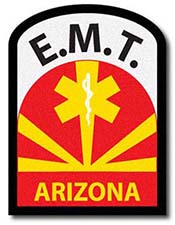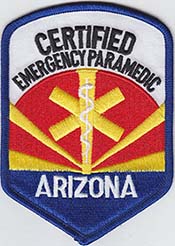What is EMS?
Emergency Medical Services, more commonly known as EMS, is a system that provides emergency medical care. Once it is activated by an incident that causes serious illness or injury, the focus of EMS is the direct emergency medical care of the patient(s).
EMS is most easily recognized when emergency vehicles or helicopters are seen responding to emergency incidents. But EMS is much more than a ride to the hospital. It is a system of coordinated response and emergency medical care, involving multiple people and agencies. A comprehensive EMS system is ready every day for every kind of emergency.
EMS is an intricate system, and each component of this system has an essential role to perform as part of a coordinated and seamless system of emergency medical care. An EMS system comprises all of the following components:
- Agencies and organizations (both private and public)
- Communications and transportation networks
- Trauma systems, hospitals, trauma centers, and specialty care centers
- Rehabilitation facilities
- Highly trained professionals
- Volunteer and career prehospital personnel (First Responders / EMR, EMT’s, Paramedics)
- Physicians, nurses, and therapists
- Administrators and government officials
- An informed public that knows what to do in a medical emergency (knows how to access the system)
EMS does not exist in isolation, but is integrated with other services and systems intended to maintain and enhance the community's health and safety. EMS operates at the crossroads between health care, public health and public safety.
What is the difference between an EMT and a Paramedic?
Emergency Medical Technician (EMT)
Emergency Medical Technician (EMT) students complete a course that is a minimum of 170-250 hours in length. EMTs are educated in assessing a patient and determining if any life threatening injuries or illnesses may be present. This includes splinting injuries for a patient following a motor vehicle collision, administering lifesaving epinephrine for a patient suffering an allergic reaction, or even administering CPR to a patient in cardiac arrest. Other skills the EMT will learn include oxygen administration, bag valve mask ventilations, delivery of a newborn, and even administration of several medications. An EMT’s assessment skills, the ability to quickly recognize if someone is dying, is the best tool in their tool box and the primary focus of the EMT education.
In general, to be eligible for enrollment into an EMT course you do not need to have any previous medical experience. The eligibility requirements and prerequisites for EMT and paramedic courses may vary from school to school.
Paramedic (PM)
Paramedic students complete a program between 1,200 to 1,800 hours and may last six to twelve months. Topics covered in paramedic courses include anatomy and physiology, cardiology, medications, and medical procedures. Paramedic courses build on EMT education and teach skills such as administering medications, starting intravenous lines, providing advanced airway management, EKG Interpretation for patients, and learning to provide emergency care to patients with life-threatening medical or traumatic emergencies. Caring for the victims of a motor vehicle crash, interpreting the EKG of a heart attack patient, or delivering a baby; these are all patients a paramedic must be prepared to assist during their shift. It never gets boring! Through a combination of lectures, skills labs, followed by hospital internship, then EMS field internship, students are prepared to pass the national certification exams to achieve the highest certification level of pre-hospital care provider in the United States.
To be eligible for a paramedic course you must first be a certified EMT and must have successfully completed an EMT Program. Paramedic Programs may have different admission requirements. Some require you to take college level preparatory coursework prior to admission, many have personal health requirements such as proof of immunizations and a health physical as an admission requirement. Schools may also require comprehensive criminal background checks, drug screening, cognitive entrance examinations, an admissions interview panel in order to determine a prospective candidates eligibility for admission. Each school has slightly different requirements but the overarching goal is to select those candidates who will most likely be successful in the rigorous training program.




